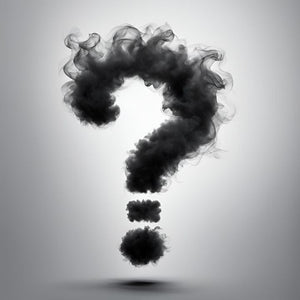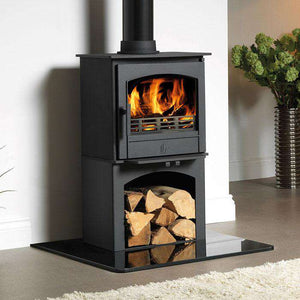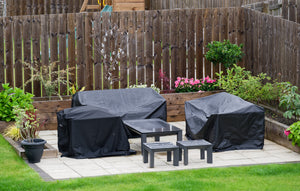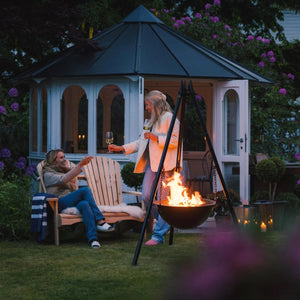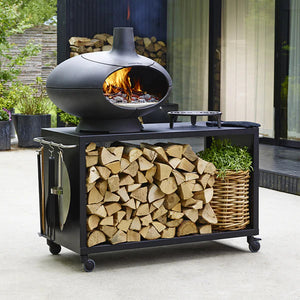Installing a wood burning stove yourself? Here’s a few reasons why that isn’t a good idea…
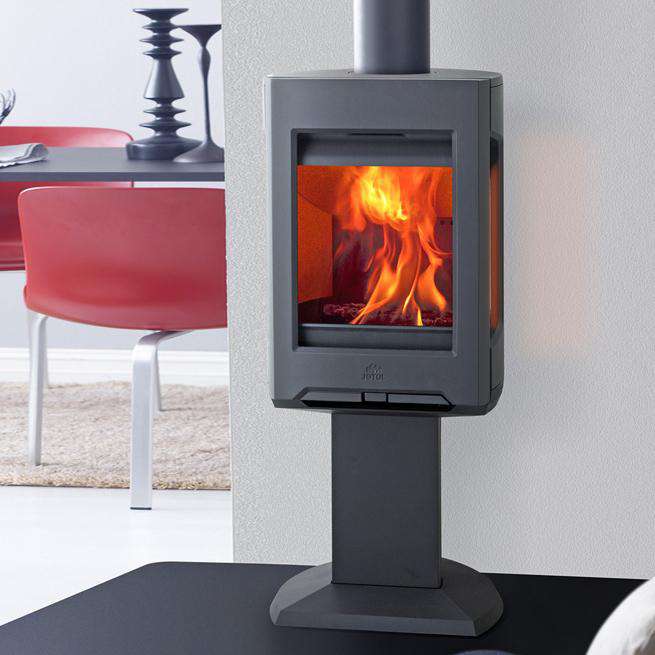
Few people would attempt to install an oven or boiler themselves, but a surprising number do try installing a wood burning stove. In fact, according to Which?, around 7% of people who have a wood burner chose to install it themselves.
At Stove Supermarket, our team has years of combined experience in wood burners and how best to install them. Our answer is always to get a professional in to install your stove in exactly the same way you would with any other major appliance in your home. Here’s all the reasons why installing it yourself can backfire.
Installing a wood burning stove yourself isn’t recommended
Installing any kind of multi-fuel or wood burning stove yourself is never a good idea. If the stove isn’t fitted correctly, according to regulations and fully compliant, then not only can it be a greater fire risk but it could also leak carbon monoxide.
It’s essential, therefore, to have your wood burner fitted by experts who will ensure it’s fully compliant with building regulations. This will keep your home and your family safe.
Even before you need to install a wood burner, you need to double check that your home is suitable. Below are some of the most important safety points that you may not have thought of before buying a wood burning stove.
Why it’s important to use a qualified and experienced installer
There are various reasons you have decided to get a wood burner. We find that the most common reasons for purchasing a log burner is as a replacement for an open fire, to use as an alternative source of heat to lower bills, or their house has no other heating option.
Always make sure you have the right kind of fuel for your wood burner as well. Burning fuel from the wrong kind of tree or burning damp logs can create gases that are potentially harmful. These kinds of gases will release more polluting particles and mean your burner is detrimental not only to your health but to the environment too.
4 important reasons why you shouldn’t install your stove
- Stoves need an appropriate flue
A flue is essential in order to allow all of the gases and smoke to escape safely. Without an adequate flue, harmful gases can quickly accumulate and flow back into your living space – this can be lethal.
The kinds of gases that cause the most harm include carbon monoxide, which is produced if any fuel fails to burn properly. This includes wood as fuel. As carbon monoxide can’t be seen or smelled, it’s really difficult to detect without some kind of monitor.
Despite its innocuous appearance, carbon monoxide can be lethal. Your flue can run through your existing chimney, you can build a new chimney, or you can have it run up and out of the ceiling.
Any existing chimney needs to be checked by a professional installer when the new flue is in place. They should conduct various smoke tests to make sure there is no leakage into your house.
Get yourself a carbon monoxide detector and a smoke alarm before you install a new stove.
- The flue/chimney should be appropriately insulated
The risk of fire can be greatly reduced if your flue is properly insulated. This keeps gases hot and therefore they don’t turn to condensation. In turn this stops creosotes and tar building up in the chimney, which decreases the risk of it catching fire.
Always ensure your chimney is regularly swept and checked to ensure deposits aren’t building up and that there is no distortion forming.
- The stove must meet certain regulations
UK building regulations Part J applies to your new stove (Part L in Northern Ireland and Part F in Scotland).
There are various other regulatory requirements that a professional fitter will know about, and you may need to make appropriate changes to the space before your stove is installed.
For example, all stoves are legally required to have a hearth of a specific size and location. You may already have a hearth but it’s now out of date in terms of compliance, or you may need to have one fitted.
Ventilation is the other major regulatory concern. It’s essential to have the right kind of ventilation in the room where your stove is going to be fitted so that the wood can burn without producing extra CO2. You may need a vent added to accommodate this.
You may also need to have combustible materials removed, as they must be a certain distance from your wood burner. This depends on the model of stove you select, but all stoves must be a certain distance from combustible material.
- Your installer should inform building control
All stove installers should be aware that they need to inform building control. However, you need to keep on top of this. The Government does have a scheme that will ensure your installer is properly trained on how to install solid fuel heating.
If you use an installer from this scheme, then they are already able to certify the stove and you won’t need separate approval from building control. Whoever you decide to use to install your stove, ensure that they are fully qualified and have all of the appropriate regulatory paperwork.
Find out how to use your wood burner safely
When your stove is safely installed, it’s important to use it safely too. Find out from your installer exactly how to use it in the best way. This will include the kind of wood you choose to burn and using the air vents appropriately to burn off harmful gases safely.
For a rundown of the kinds of stoves we have available, click here.
- Stovesupermarket Admin


